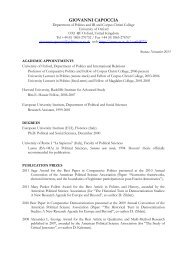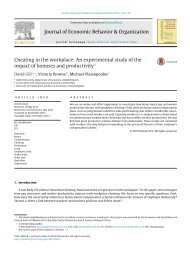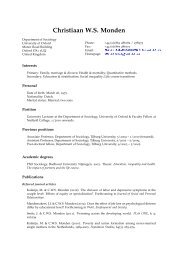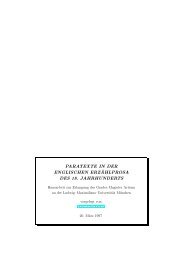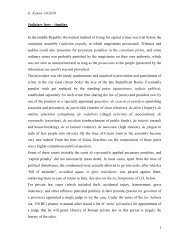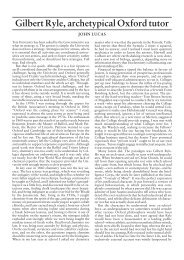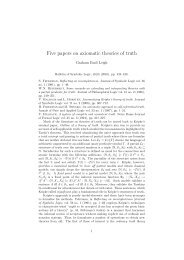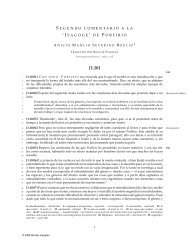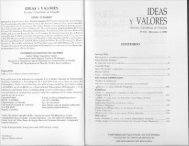Lexical Functional Grammar - Personal Pages Index
Lexical Functional Grammar - Personal Pages Index
Lexical Functional Grammar - Personal Pages Index
You also want an ePaper? Increase the reach of your titles
YUMPU automatically turns print PDFs into web optimized ePapers that Google loves.
(5) a. IP −→ NP I ′<br />
b. IP<br />
NP I ′<br />
The right-hand side of an LFG phrase structure rule is a regular expression<br />
(see Formal Languages), allowing for disjunction, optionality, and arbitrary<br />
repetition of a node or sequence of nodes. The V and NP daughters in the rule<br />
in (6) are optional, and the Kleene star (*) annotation on the PP indicates that<br />
a sequence of zero or more PP constituents may appear.<br />
(6) V ′ −→ (V) (NP) PP ∗<br />
3 <strong>Functional</strong> structure<br />
Syntactic analyses intraditional grammatical descriptions arestated interms of<br />
abstract syntactic functions like subject, object, and complement. These functions<br />
are represented at LFG’s functional structure. <strong>Functional</strong> structure, or<br />
f-structure, represents abstract grammatical functions like subject and object<br />
as well as features such as tense, case, person, and number.<br />
3.1 Grammatical functions and their representation<br />
In a sentence like David devoured a sandwich, David is the subject and a sandwich<br />
is the object. This information is represented by an attribute-value<br />
structure, the f-structure, in which the value of the SUBJ feature is the f-<br />
structure for the subject, and the value of the OBJ feature is the f-structure for<br />
the object.<br />
(7) David devoured a sandwich.<br />
⎡<br />
⎤<br />
PRED ‘DEVOUR〈SUBJ,OBJ〉’<br />
SUBJ [ PRED ‘DAVID’ ]<br />
⎢ [ ]<br />
⎥<br />
⎣ SPEC A ⎦<br />
OBJ<br />
PRED ‘SANDWICH’<br />
For clarity, many of the features and values in this f-structure have been omitted,<br />
a practice often followed in LFG presentations. The full f-structure would<br />
contain tense, aspect, person, number, and other functional features.<br />
Every content word in a sentence contributes a value for the feature PRED.<br />
These values are called semantic forms. In the functional structure, semantic<br />
forms are surrounded by single quotes: the semantic form contributed by the<br />
word David is ‘DAVID’.<br />
An important property of semantic forms is that they are uniquely instantiated<br />
for each instance of their use, reflecting the unique semantic contribution<br />
of each word within the sentence. This is occasionally indicated by associating<br />
a unique numerical identifier with each instance of a semantic form, as in (8):<br />
6



